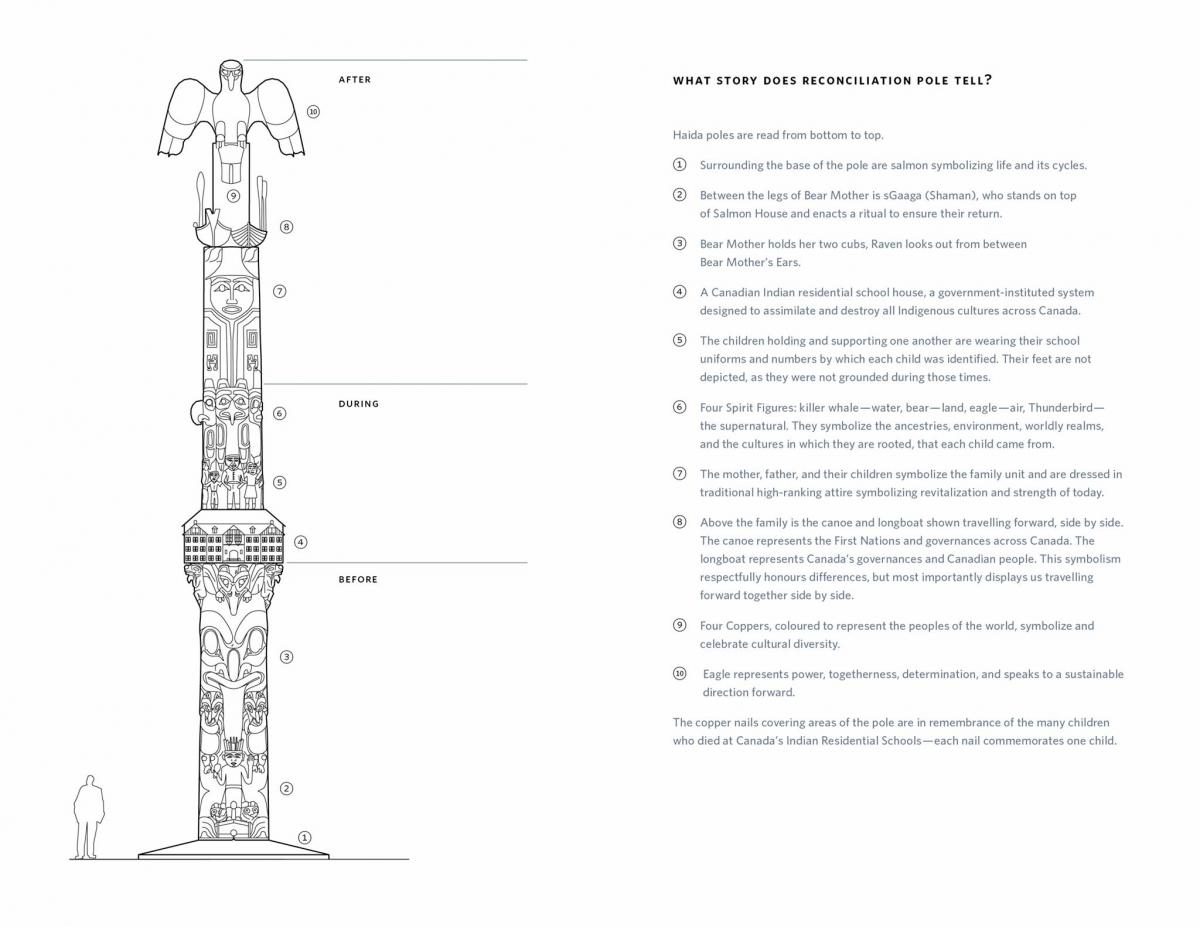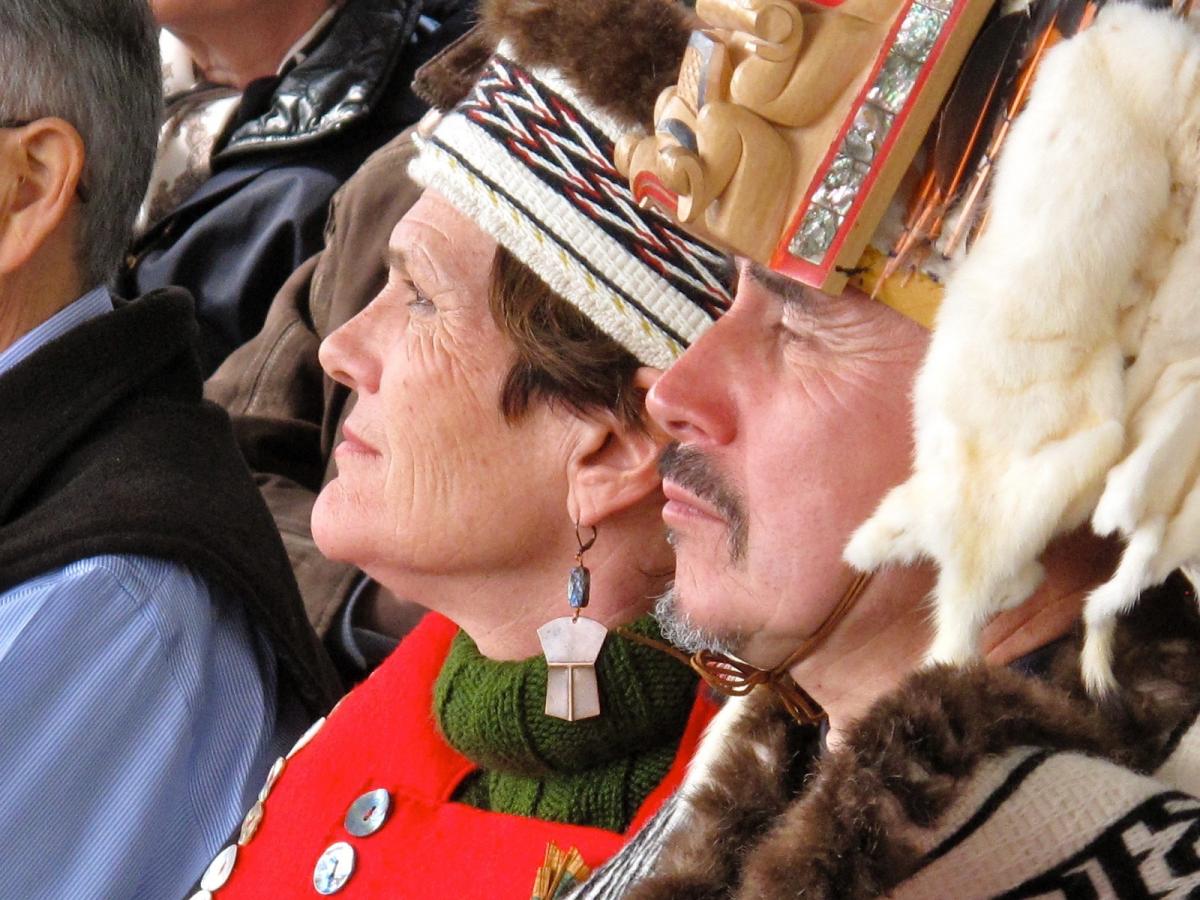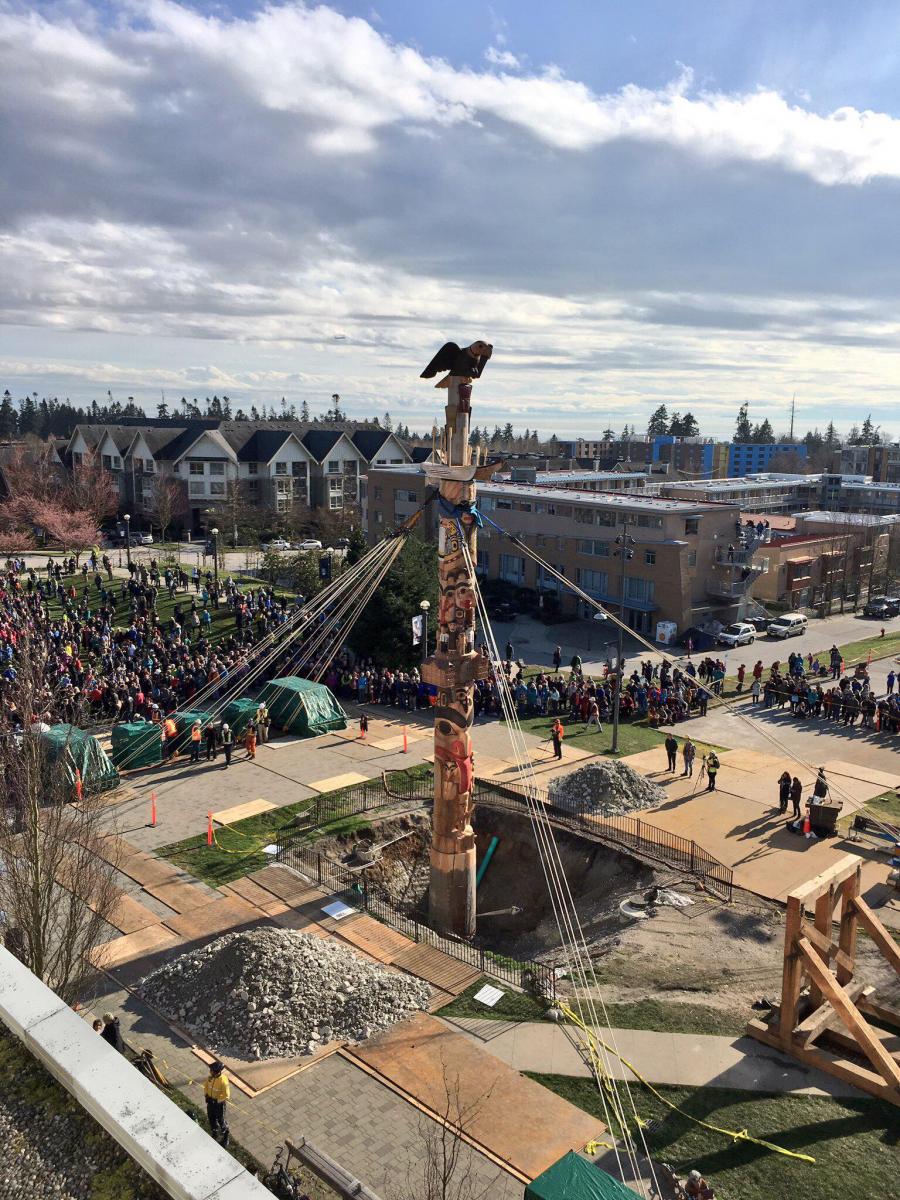Master Haida carver, James Hart’s latest project is the reconciliation pole, which now stands tall at the south end of Main Mall at UBC, looking towards the future site of the Indian Residential School History and Dialogue Centre. The reconciliation pole recognizes and pays respect to the time before the residential school system, during and after.
The pole, carved into an 800-year-old cedar tree, has special figures representing different aspects of the residential school experience. The thousands of copper nails engraved into the pole represent the number of children who lost their lives while in the system.

This Saturday, thousands of people gathered to join James Hart and his family to install the pole. The event was a rather difficult and emotional process for the Hart family, many of whose members themselves were survivors of residential schools. Installation of the pole, however, the pole symbolizes and celebrates the strength and resilience of Indigenous peoples in overcoming the effects of the residential school system.

I was fortunate to be able to volunteer at the Reconciliation Pole ceremony. It was an extraordinarily moving event where spectators not only heard directly from survivors of residential schools, but also got to participate in raising the Reconciliation Pole in the traditional manner of the Haida people by pulling on the ropes to raise the 55 feet pole.

If you haven’t seen the Reconciliation Pole yet, I highly recommend visiting it to appreciate its beauty and reflect on a significant part of Canadian history that cannot be disregarded.
